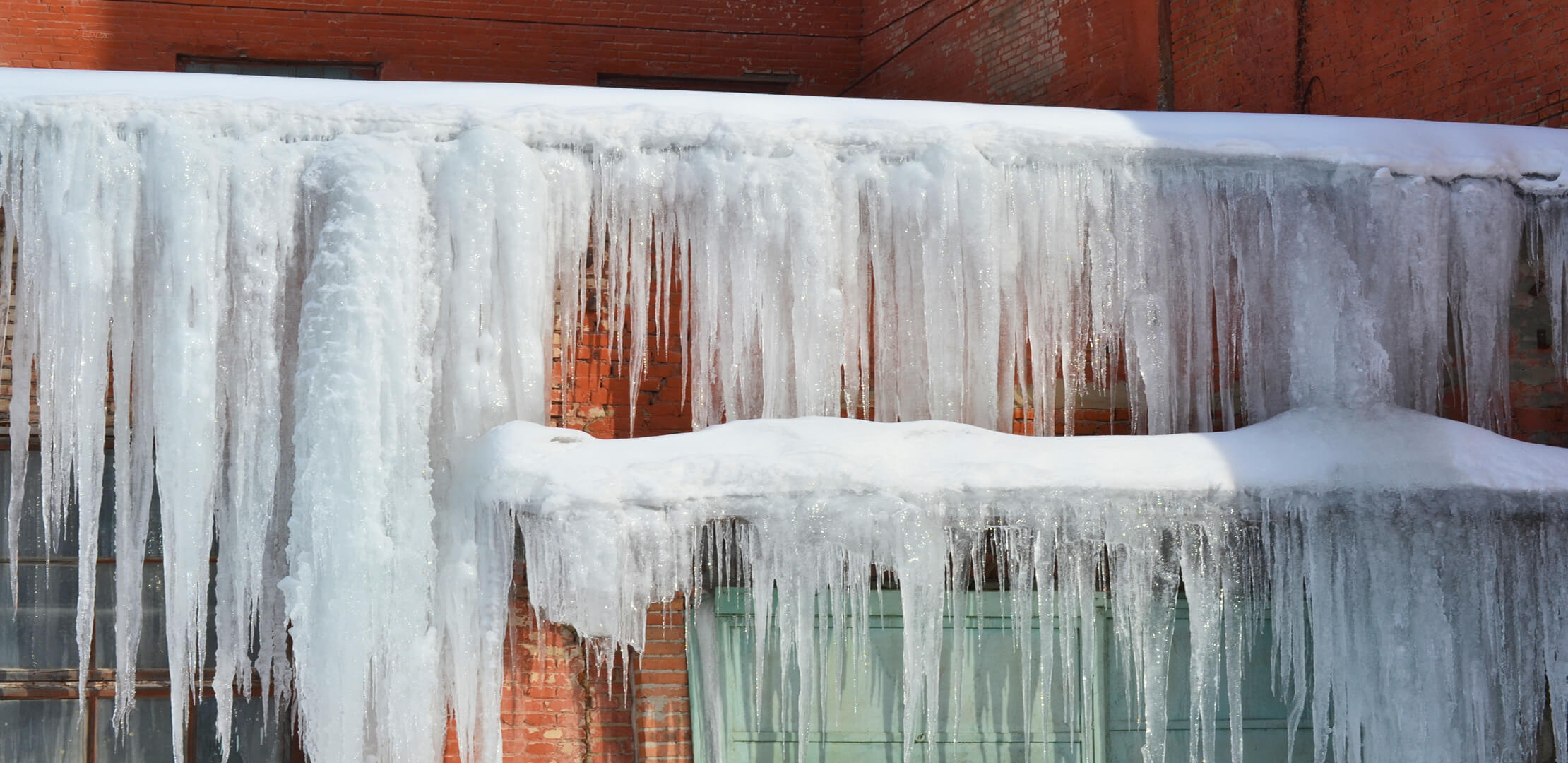An ice dam is caused when warm air enters into the attic and roof system on a day when the temperature outside is 32 degrees or below “and” there is snow on the roof. This warm air can raise the roof temperature above 32 degrees and melt the snow. The snow melt then flows down the warm roof and eventually reaches a frozen portion (usually at the gutter line or eave) where it refreezes. As more snow melt reaches this spot, it too refreezes and the resulting new ice can begin to form a dam, trapping the additional snow melt behind it. This trapped water can then find it’s way under shingles and into your home causing interior water damage and mold. A good visual indicator of a potential ice dam is heavy ice accumulation on the roof and icicles.You can prevent ice dams by eliminating the warm air from entering and staying in the attic. The corrective process to eliminate ice damming is a combination of adequate insulation and appropriate sealing techniques, proper ventilation and the elimination of other ice damming culprits.
Adequate Insulation and Sealing
The Climate in Chicago requires an attic space with an insulation R value of 49. Meaning, that in order to achieve maximum energy efficiency and cost savings, you must have sufficient thermal resistance in your attic. In addition to having adequate amounts of insulation, it must also be installed correctly and have effective sealing methods employed. At Get Dwell, we find that in over 90% of the attics in the Chicago area do not have sufficient insulation and in the vast majority of those, the energy sealing work was never done or done inadequately. Fortunately, doing this work will not only help prevent ice dams but proper attic insulation and sealing will have the biggest impact on the comfort of your home. It is estimated that these efforts will save you 20% of your heating and cooling costs.
Adequate Ventilation
In order to realize how important ventilation is to the the ice damming puzzle, you must first understand a property of thermodynamics, in which “heat seeks cold”. In our homes when the warm air is seeking cold, it follows the path of least resistance and if there are unsealed and under-insulated areas of your attic, the warm air will use these avenues to escapes into the colder attic space causing the temperature to rise and the snow to melt. In order to avoid this situation, the attic must be properly ventilated so that any warm air that enters the attic space is effectively ventilated to the outside. This is achieved through a proper combination of lower soffit vents and higher roof, ridge or gable vents. Unfortunately, we find that over 20% of the homes that were built or remodeled in Chicago after 1970, have a serious lack of ventilation and subsequently have mold issues.
Other Ice Damming Culprits
The other culprits that allow your attic space to heat up are
- HVAC systems located in the attic that do not have an insulated housing surrounding them
- Bathroom fans that empty directly into the attic space instead of exhausting through a roof vent
- Uninsulated heating ductwork
- Uninsulated attic access covers or stairs
- Uninsulated can lights
- Dryer ducts that empty directly into the attic space instead of exhausting through a roof vent
- Service providers who enter the attic to perform work and remove the insulation barrier to perform their service and do not put it back or re-insulate when their work is completed. In Chicago, we have yet to see a cable or dish installer re-insulate or seal the area the areas they have compromised.
